10 Rare Houseplants To Add to Your Collection
Calling all plant parents! These unique, leafy greens should be on your radar.
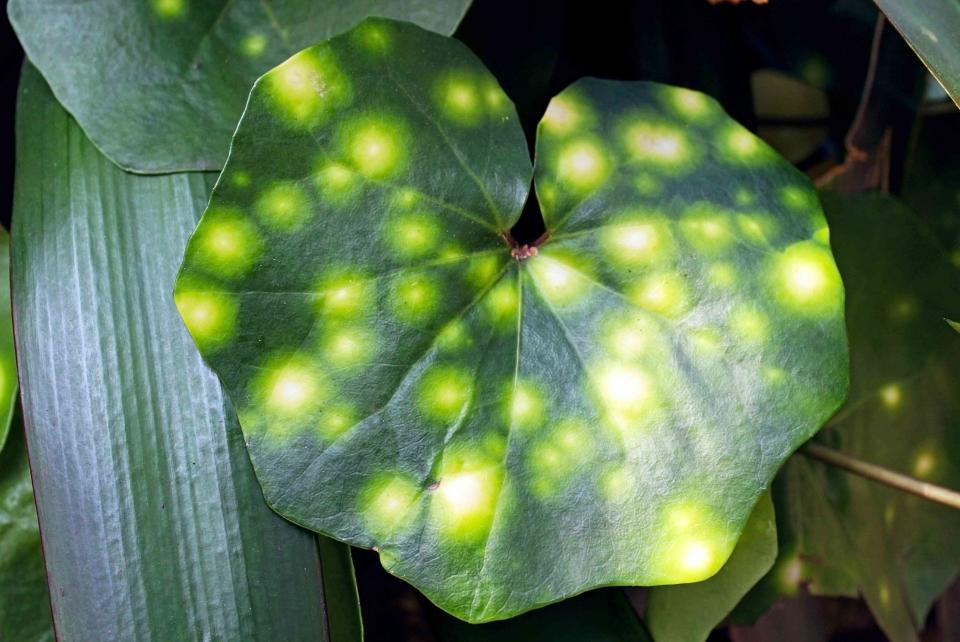
Westranger/Getty Images
Houseplants have been having a moment for some time now in the design world—they’re easy ways to bring in vibrant color to a space. And everyone’s pretty familiar with the most popular ones, like fiddle leaf figs and monsteras, but there are a bunch of other varieties out there that are highly coveted by plant enthusiasts. Possessing a rare houseplant feels like a special honor—you were able to track down something that was hard to find in stores, is hard to maintain, or is just not common knowledge yet!
Eli Manekin, the brand director for easyplant.com, explains, “The rarity of houseplants is often driven by the horticultural market's demand and supply dynamics, which can fluctuate. These plants are considered rare not just because they are infrequently found in the wild, but also because they have become highly desirable in the houseplant community.” We asked Manekin and other experts to share their recommendations for rare houseplants that’ll serve as beautiful decorative accents in your home.
Related: 28 Low-Maintenance Houseplants Most Likely to Survive All Year Long
Monstera Obliqua (Peruvian Form)
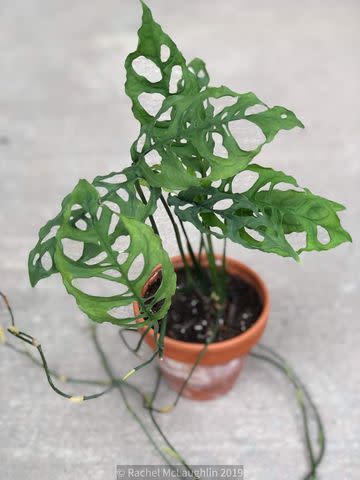
Rachel McLaughlin; House Plant Hobbyist
Okay, so we know: Monsteras are pretty common. But this particular variety is not-so-common. According to Manekin, “This plant has extreme leaf fenestrations (a.k.a. holes) and is often confused with the Monstera Adansonii, a true Monstera obliqua is rare in cultivation and can be very expensive when found in the United States.” Originally from Peru, this plant is slow-growing and can be tricky to maintain—it requires lots of humidity for it to thrive. (Keeping it in a bathroom might not be a bad idea here!) It also needs plenty of watering since it’s technically a tropical plant. Bright, indirect sunlight will encourage fast growth. In general, all monsteras are considered mildly toxic to humans and animals so keep this leafy pal out of reach from fur babies and human babies!
Firefly Leopard Plant
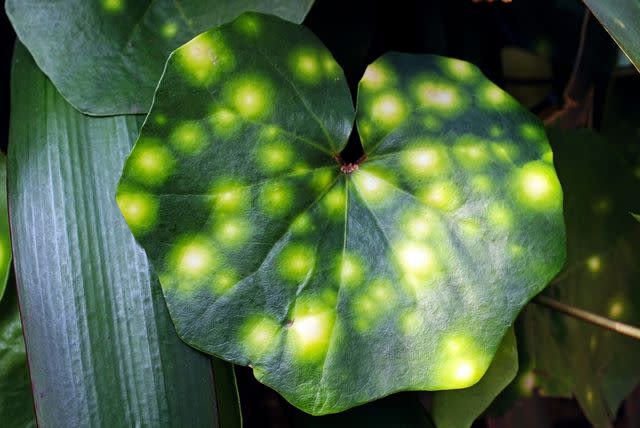
Westranger/Getty Images
Caroline McCann, an expert at Monrovia (which sells more than 4,000 plant varieties!), admits the firefly leopard plant is also “pretty hard to find.” Technically the Farfugium japonicum, it’s a species from East Asia with spotty leaves that resemble glowing fireflies, hence the name! This striking botanical doesn’t need too much sun—partial to full shade is actually best. Too much sun, especially direct light, can cause wilting. However, it’s a thirsty plant that grows best with consistently moist soil and thrives in mid to high levels of humidity, so you might need a mister or humidifier for a happy houseplant. Thankfully, this one is not known to be toxic!
Paraiso Verde Philodendron
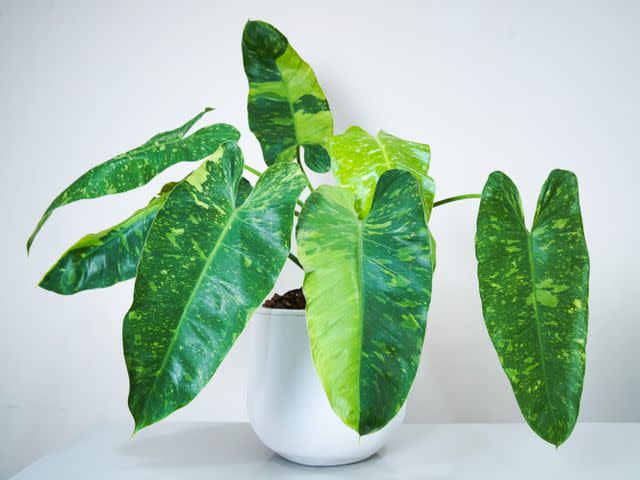
krisanapong detraphiphat/Getty Images
McCann says this variety of philodendron is fairly coveted, but she predicts there will be more availability 2024, so it should be easier to source. Currently, you can only get this one from specialty plant stores or online. The beautiful variegated leaves of this tropical plant are what make it so appealing to gardeners—plus, the vines can grow up to 10 feet when it’s mature! The Paraiso Verde is considered a fast-growing plant when it’s properly cared for. It needs moist soil, warmth and humidity, and bright indirect sunlight. Keep in mind that it’s toxic to pets and people.
Tectonic Pangea Begonia
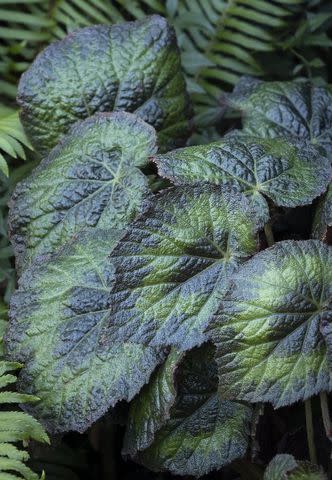
Doreen Wynja for Monrovia
McCann shared with us that Monrovia has a partnership with plant hunter Dan Hinkley (talk about a cool job!), and he recently brought back a series of rare begonias from Northeastern India. Specifically, the Tectonic Pangea Begonia (or Begonia thomsonii) is one that will be highly sought after once it’s available in Spring 2024 due to the striking foliage—the halo of lime-green on the dark green leaves is a very unique characteristic that’s not super common in houseplants. Fortunately this plant is fairly easy to care for and doesn’t require a ton of humidity or moisture—just water when the soil starts to dry out. When cared for in a lightly shaded setting, it can grow to around a foot tall. Begonias are typically toxic, especially the underground parts, so make sure it’s kept away from any digging paws.
Black ZZ Plant
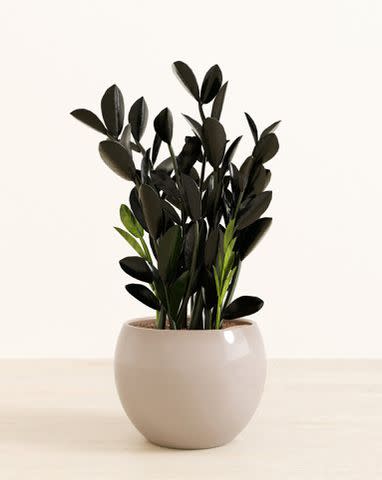
ZZ plants fall in the same category as monsteras—that is, the “mainstream” category. But the Black ZZ plant is a strain that’s hard to get a hold of, according to Manekin. Thanks to its nearly-black and emerald leaves, it’s earned itself the nickname the “raven ZZ.” Originally from the arid regions of Eastern Africa, this little shrub doesn’t ask for much H2O thanks to its high drought tolerance. The Black ZZ can withstand a variety of light conditions too, which makes it extremely easy to maintain (perhaps the easiest one on this list!). It is toxic though, which is something you should take into account if you have pets.
Thai Constellation Monstera
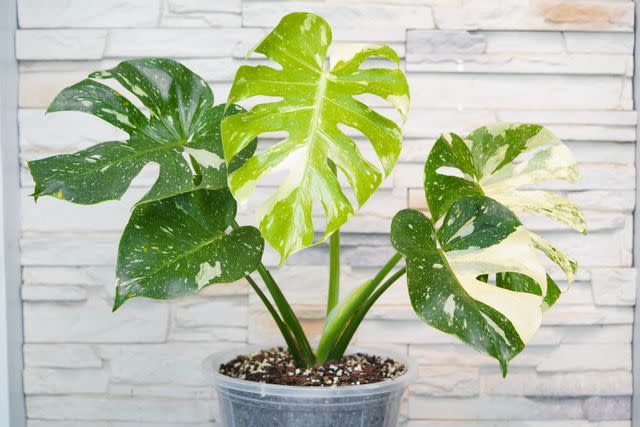
Photo by krisanapong detraphiphat // Getty Images
"This has been the “it plant” for about five years now—and it’s easy to see why," says Justin Hancock, Costa Farms Horticulturalist. "The dark green leaves bear the typical Monstera-like fenestrations but are also decorated with streaks and splashes of creamy white. It’s relatively slow-growing, especially in the average home, but a showstopper as it grows and the leaves size up. In good conditions indoors, you can potentially get leaves up to 2 feet long or more! The plant’s slow-growing nature have made it relatively slow to propagate, making it hard to find," he explains, caveating that it's recently becoming much more readily available.
In terms of care, Hancock says it's similar to traditional Monstera deliciosa: Medium to bright light is best, water as the top 25 to 50 percent of the potting mix dries to the touch, provide average household temperatures, and average to above-average relative humidity levels.
Esqueleto Monstera
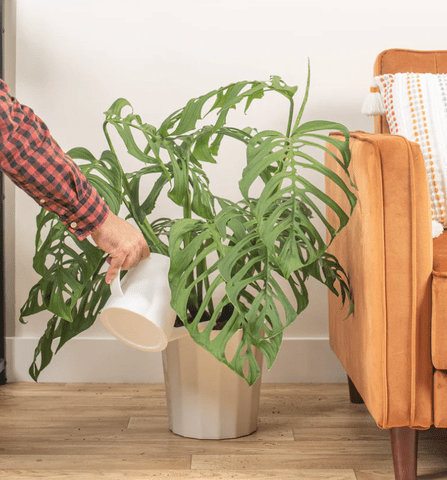
Photo by Costa Farms
"Esqueleto is a cousin of Monstera obliqua—it looks very much like its cousin, but on steroids. The leaves can easily get over 18 inches long and are decorated with large, window-like fenestrations—a nod to its name; Esqueleto is Spanish for 'skeleton,'" explains Hancock. "Because it’s such a large plant, many nurseries don’t have space for many Esqueleto mother plants to harvest cuttings from, so it can be pretty hard to find from plant shops. Once established, it’s relatively quick growing, but it likes to stay growing vertically to produce those eye-catching leaves."
When it comes to care, Hancock suggests giving it medium to bright light and water as the top 25 to 50 percent of the potting mix dries to the touch. Provide average household temperatures and above-average relative humidity levels—average humidity levels can be fine if you’re on point with the watering, though leaf browning may occur if the plant both dries out and grows in dry air.
Shangri-La Pothos
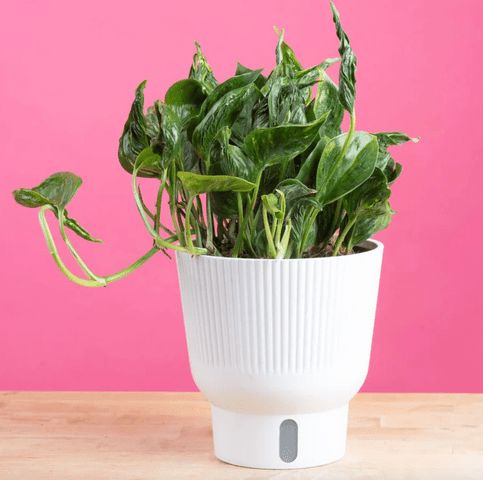
Photo by Costa Farms
"Discovered in Japan, this Pothos stands out from pretty much all of its relatives because its heart-shaped leaves don’t fully open and are textured with crests and ridges," says Hancock. "These explain some of its nicknames: Sleepy Pothos, since the leaves don’t fully unfurl, and Spinach Pothos, because the leaves have been compared to looking like steamed spinach. It’s something of a polarizing variety—you either love it or don’t get it, but Shangri-La is certainly a unique specimen."
For care, Hancock suggests a routine that's similar to the traditional Golden Pothos: Medium to bright light is best, water as the top 25 to 50 percent of the potting mix dries to the touch, provide average household temperatures, and average to above-average relative humidity levels.
Platinum Scindapsus
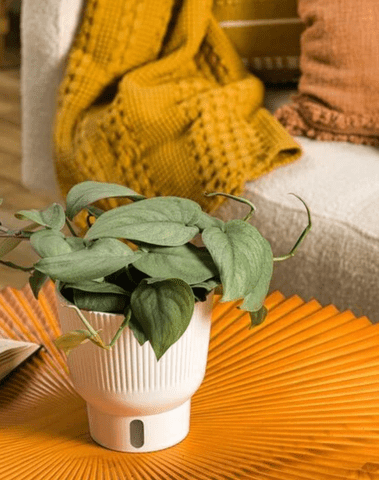
Photo by Costa Farms
"Silver foliage is on trend, which makes me wonder why this plant can be so difficult to find," Hancocks says. "Platinum Scindapsus is an incredibly elegant plant that offers silver, heart-shaped leaves. In the light, crystals in the cells reflect light, giving the leaves a metallic appearance. It’s a climbing/trailing houseplant that looks as good cascading from a hanging basket in a bright window as it does climbing up a moss pole. It’s a showstopper when contrasted against traditional green-leaf plants!"
Give this plant medium to bright light, water as the top 25 to 50 percent of the potting mix dries to the touch, provide average household temperatures, and average to above-average relative humidity levels.
Cool Beauty Dieffenbachia
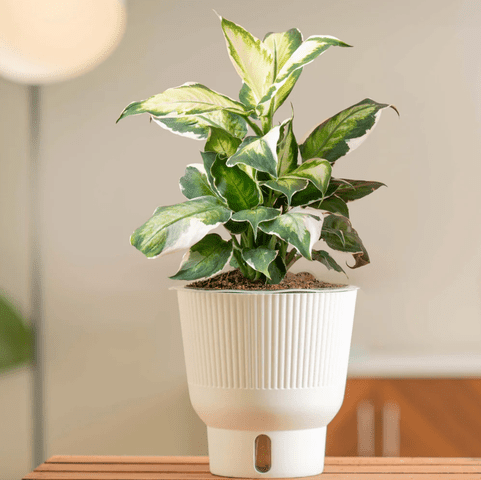
Photo by Costa Farms
While Dieffenbachia plants are fairly common, Hancock explains that this exceptional newer variety is hard to come by. "It’s a dwarf selection with green leaves with crisp white edges and a creamy-gold center. It produces lots of offshoots, so it stays nice and full, unlike old-school Dieffenbachia, which could get 6 feet tall, but only have leaves on the top half of the plant. It comes from Japan and the plant is under patent protection—meaning only growers that get a license from the patent owner can grow this gorgeous variety."
Give it medium to bright light, water as the top 25 to 50 percent of the potting mix dries to the touch, provide average household temperatures, and average to above-average relative humidity levels.
Related: 12 Mistakes Almost Everyone Makes With Their House Plants
For more Real Simple news, make sure to sign up for our newsletter!
Read the original article on Real Simple.


